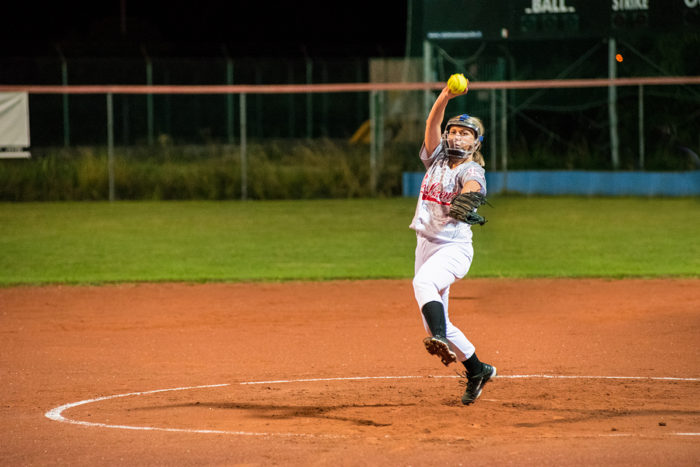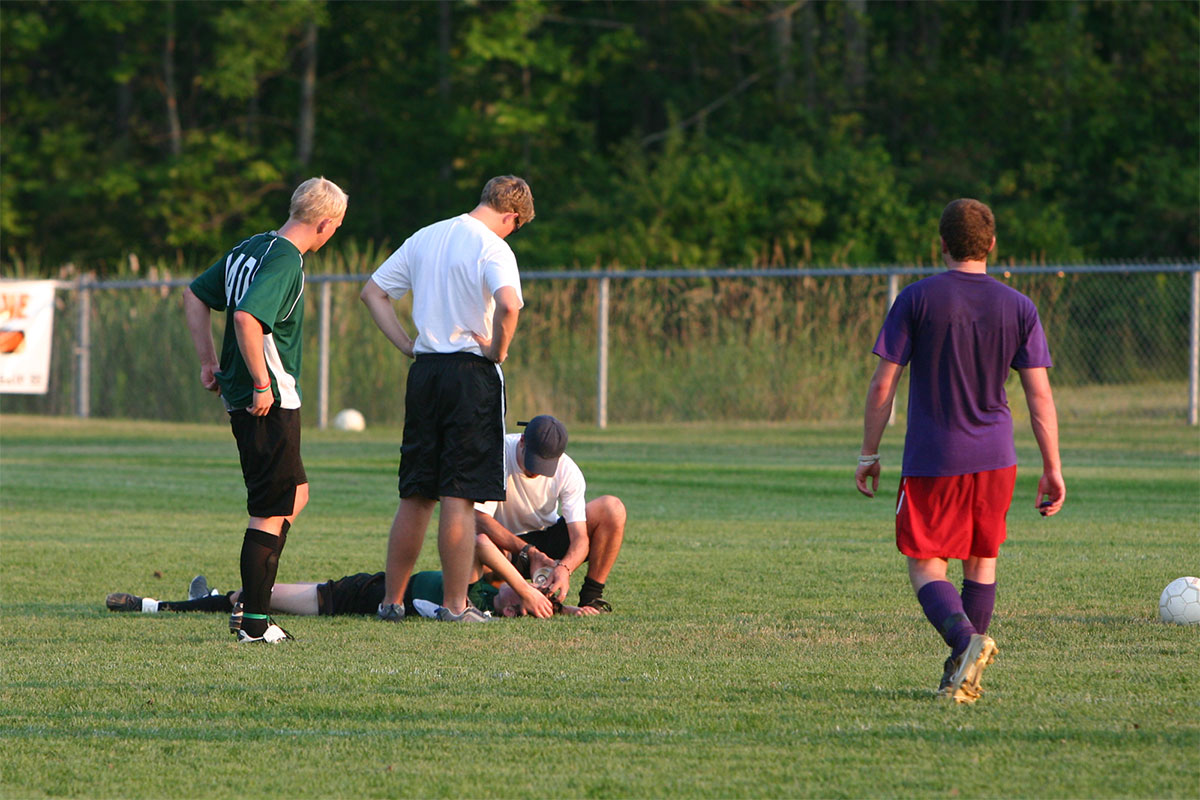Are fast-pitch softball pitchers overdoing it?
Many experience shoulder fatigue, pain, weakness linked to overuse
 Getty Images
Getty ImagesBaseball leagues often have fairly strict limits on how many innings pitchers can pitch or how many pitches a player can throw. But for girls playing fast-pitch softball, such guidelines are rare. Washington University sports medicine specialists have found that many pitchers aren't getting enough time to recover and are experiencing shoulder fatigue, pain, weakness and injury.

Youth baseball leagues often have fairly strict limits on how many innings pitchers can pitch, or how many pitches a player can throw. But for girls playing fast-pitch softball, such guidelines are rare. One reason is that softball pitchers throw underhand, a motion thought to stress the arm less than the overhand throws seen in baseball.
But researchers in the Department of Orthopaedic Surgery at Washington University School of Medicine in St. Louis have found that although fast-pitch softball may be less risky, the potential for injury still exists. In a pair of recent studies, sports medicine specialist Matthew V. Smith, MD, and his colleagues evaluated more than 100 athletes, ages 14 to 18, to understand the risks faced by softball pitchers. They reported their findings in The American Journal of Sports Medicine.
Studying pitchers in highly competitive softball leagues, Smith, an associate professor of orthopedics, and his colleagues found that 40 percent had some type of shoulder or arm injury during the season. And when the researchers looked more closely, they found that part of the reason may be that softball pitchers frequently pitch several games in succession, particularly during tournaments. Smith’s team recently evaluated pitchers before and during two- and three-day tournaments and found progressive increases in shoulder pain, fatigue and weakness. Smith described his team’s findings:
Why doesn’t fast-pitch softball have pitching limits?
The dogma involving throwing athletes is that the underhand pitch is thought to be safer, but there have been biomechanical studies in recent years indicating that the stresses on the shoulder are very similar, regardless of whether one is pitching overhand or underhand. The idea that we should protect these softball pitchers hasn’t really caught on. Because there aren’t as many pitchers on most softball teams as there are on baseball teams, coaches tend to “ride” the ones who are successful. Most don’t realize they’re putting the pitcher at risk, but it turns out that the windmill style of pitching that girls use isn’t as safe as some might think.
Why are pitchers more vulnerable to injury than players at other positions?
On a fast-pitch softball team, the pitcher is the player doing most of the throwing. She’s throwing 70 or 100 or 125 pitches in a game. Meanwhile, the center fielder may only throw at peak effort four or five times in a game. Our study focused on pitchers because they are the ones who most commonly come to the doctor’s office with injuries. There is some data suggesting that fatigue is a precursor to injury. If we limit pitches, get them more rest and give them more time to recover, it’s logical to think the injury risk will decline.
What did you find when you went to softball tournaments and evaluated pitchers as they pitched consecutive games on the same day or multiple games in a few days?
We used a device called a dynamometer that allows us to test strength. They push against it, and it gives us an objective measurement of strength. We also asked them how they felt, how tired they were and how much pain they were in. We can correlate objective measures of strength and associate those with how the athletes say they feel. Usually during a tournament, we compare these things at the beginning of a day of playing to these same measurements at the end of the day. Then we ascertain their strength levels at the start of the next day and determine whether they recover their strength.
Do the girls recover their strength?
No. What we have seen is that as pitchers pitch more and don’t get as much rest between games, they get weaker. They don’t recover. But we need to do more research because we don’t really know how long it takes to regain strength to the degree it’s safe to pitch again.
What can pitchers and their coaches do to protect their arms?
Posture is definitely a factor in baseball and softball. You have poor posture for the majority of the day, and then you try to go out and throw a ball when your shoulders have been hunched forward most of the day. That makes it hard for the muscles in the back to operate efficiently. We need the muscles in the back and shoulder to brace the shoulder when a pitcher is throwing, so we often prescribe physical therapy and conditioning exercises to get the shoulder prepared to throw. We also found that the majority of injuries among the pitchers we studied occurred during the first six weeks of the season. That suggests part of the problem may be that some pitchers go from doing a little bit of training — or maybe nothing at all — to throwing a great deal in a short period of time. And many break down.
Baseball pitchers get elbow injuries, such as ligament tears that require Tommy John surgery. What brings softball pitchers in to see you?
Usually it’s biceps problems. They’re putting their arms behind their bodies with a lot of tension on the shoulder joint, and so they start having discomfort in front of the shoulder, which is where the skinny portion of the biceps runs through the shoulder joint. We need to teach pitchers to have their shoulder blades tucked around the chest wall to take tension off of the shoulder. But what happens is that as the pitcher gets tired, she starts to use different muscle groups to generate velocity, and that’s when injuries are more likely to occur.




 Related:
Related: 

